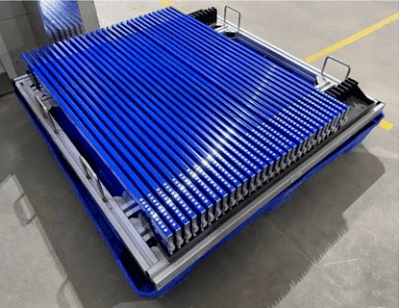Why does the capacity of lithium batteries decrease in low-temperature environments?
According to reports, the discharge capacity of lithium-ion batteries at -20 ℃ is only about 31.5% of that at room temperature. The working temperature of traditional lithium batteries is between -20~+55 ℃.
Among numerous environmental factors, temperature has the greatest impact on the performance of lithium batteries. The electrolyte used in lithium batteries, as an organic liquid, like grease, can become viscous or even coagulate at low temperatures. At this point, the activity of conductive lithium salts inside is greatly restricted, resulting in low charging efficiency, which can lead to slow charging, insufficient charging, and discharge of lithium batteries at low temperatures.Lithium batteries are limited in their use in low-temperature environments, as their discharge capacity may severely decline and they cannot be charged at low temperatures. During low-temperature charging, the insertion of lithium ions on the graphite electrode of the battery and the lithium plating reaction coexist and compete with each other. Under low temperature conditions, the diffusion of lithium ions in graphite is inhibited, leading to a decrease in the conductivity of the electrolyte, resulting in a decrease in the embedding rate. This makes the lithium plating reaction more likely to occur on the graphite surface. The main reasons for the decrease in lifespan of lithium-ion batteries when used at low temperatures are the increase in internal impedance and the capacity decay caused by lithium ion precipitation.At low temperatures, the performance of lithium batteries deteriorates severely, and there may be some side reactions during the charging and discharging process of lithium-ion batteries. Among these side reactions, the main one is the irreversible reaction between lithium ions and the electrolyte, which can cause the capacity of lithium batteries to decline and further deteriorate their performance.
Factors Restricting the Low Temperature Performance of Lithium Batteries
1. In low temperature environments, the viscosity of the electrolyte increases and even partially solidifies, leading to a decrease in the conductivity of lithium-ion batteries.
2. The compatibility between the electrolyte, negative electrode, and separator deteriorates in low temperature environments.
3. In low-temperature environments, the negative electrode of lithium-ion batteries experiences severe lithium precipitation, and the precipitated metal lithium reacts with the electrolyte, resulting in the deposition of products that increase the thickness of the solid-state electrolyte interface (SEI).4. In low-temperature environments, the diffusion system inside the active material of lithium-ion batteries decreases, and the charge transfer impedance significantly increases.

Comments
Post a Comment